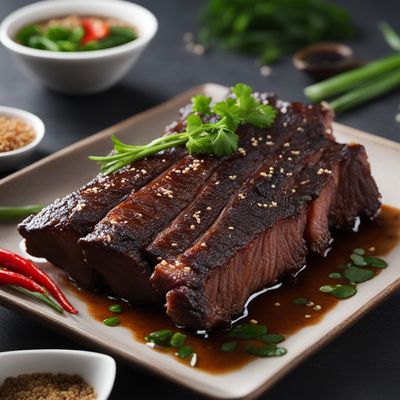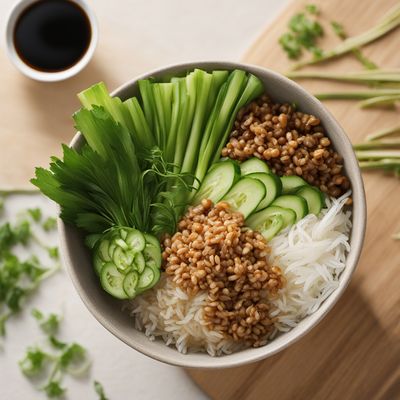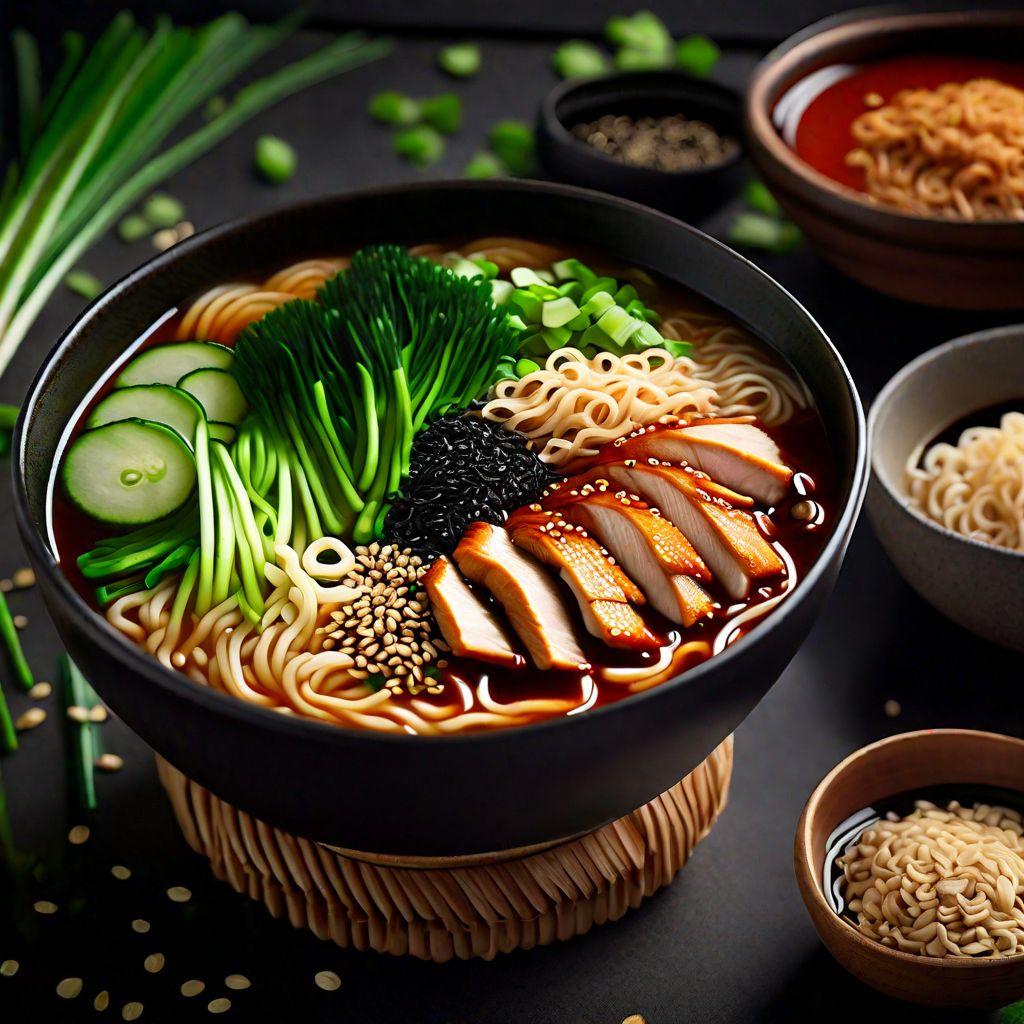
Recipe
Korean-Style Ramen
Kimchi Ramen: A Spicy Twist on a Japanese Classic
4.8 out of 5
In Korean cuisine, ramen takes on a unique and fiery twist. This Korean-style ramen recipe combines the comforting flavors of Japanese ramen with the bold and spicy elements of Korean cuisine. The result is a delicious and satisfying bowl of noodles that will warm your soul and tantalize your taste buds.
Metadata
Preparation time
15 minutes
Cooking time
20 minutes
Total time
35 minutes
Yields
4 servings
Preparation difficulty
Easy
Suitable for
Vegetarian, Pescatarian, Dairy-free, Nut-free, Egg-free
Allergens
Soy, Sesame
Not suitable for
Vegan, Gluten-free, Soy-free, Shellfish-free, Paleo
Ingredients
While Japanese ramen typically features a savory and umami-rich broth, Korean-style ramen incorporates spicy and tangy flavors. The addition of kimchi, a staple in Korean cuisine, gives the dish a vibrant kick. The noodles are often chewier and thicker, providing a heartier texture. Korean ramen also tends to be spicier, making it a perfect choice for those who enjoy a little heat in their meals. We alse have the original recipe for Ramen, so you can check it out.
-
4 cups (950ml) chicken or vegetable broth 4 cups (950ml) chicken or vegetable broth
-
2 tablespoons gochujang (Korean red pepper paste) 2 tablespoons gochujang (Korean red pepper paste)
-
2 tablespoons soy sauce 2 tablespoons soy sauce
-
1 tablespoon sesame oil 1 tablespoon sesame oil
-
1 tablespoon minced garlic 1 tablespoon minced garlic
-
1 tablespoon minced ginger 1 tablespoon minced ginger
-
1 cup (200g) kimchi, chopped 1 cup (200g) kimchi, chopped
-
1 cup (150g) sliced mushrooms 1 cup (150g) sliced mushrooms
-
2 packs of ramen noodles 2 packs of ramen noodles
-
2 soft-boiled eggs 2 soft-boiled eggs
-
4 green onions, sliced 4 green onions, sliced
-
1 tablespoon toasted sesame seeds 1 tablespoon toasted sesame seeds
-
Optional toppings: sliced pork, seaweed, bean sprouts Optional toppings: sliced pork, seaweed, bean sprouts
Nutrition
- Calories (kcal / KJ): 350 kcal / 1465 KJ
- Fat (total, saturated): 10g, 2g
- Carbohydrates (total, sugars): 50g, 5g
- Protein: 15g
- Fiber: 5g
- Salt: 2g
Preparation
-
1.In a large pot, bring the chicken or vegetable broth to a boil.
-
2.Add the gochujang, soy sauce, sesame oil, minced garlic, and minced ginger to the pot. Stir well to combine.
-
3.Add the chopped kimchi and sliced mushrooms to the broth. Simmer for 10 minutes to allow the flavors to meld together.
-
4.Cook the ramen noodles according to the package instructions. Drain and set aside.
-
5.Divide the cooked noodles into serving bowls. Ladle the hot broth over the noodles.
-
6.Top each bowl with a soft-boiled egg, sliced green onions, and toasted sesame seeds.
-
7.Optional: Add sliced pork, seaweed, or bean sprouts as desired.
-
8.Serve hot and enjoy!
Treat your ingredients with care...
- Kimchi — If you prefer a milder flavor, rinse the kimchi before chopping it. For a stronger kick, use aged kimchi.
- Gochujang — Adjust the amount of gochujang according to your spice preference. Add more for extra heat or reduce for a milder flavor.
- Ramen noodles — Look for Korean-style ramen noodles, which are thicker and chewier than traditional Japanese ramen noodles.
Tips & Tricks
- For a richer broth, you can add a spoonful of Korean anchovy stock or dashi powder to the broth.
- Customize your ramen by adding your favorite vegetables such as bok choy, spinach, or corn.
- If you prefer a meaty version, you can substitute the mushrooms with thinly sliced pork or beef.
- To make the dish more filling, add a spoonful of creamy peanut butter to the broth for a nutty twist.
- Don't forget to garnish your ramen with a drizzle of chili oil or a sprinkle of Korean chili flakes for an extra kick.
Serving advice
Serve the Korean-style ramen hot in individual bowls. Encourage your guests to mix the ingredients together before enjoying the flavorful broth and chewy noodles. Provide chopsticks and spoons for a traditional eating experience.
Presentation advice
To enhance the presentation, arrange the toppings neatly on top of the noodles. Place the soft-boiled egg halves on one side and sprinkle the sliced green onions and toasted sesame seeds on the other side. Drizzle a little sesame oil over the top for added shine and aroma.
More recipes...
For Ramen » Browse all
For Japanese cuisine » Browse all
More Japanese cuisine dishes » Browse all
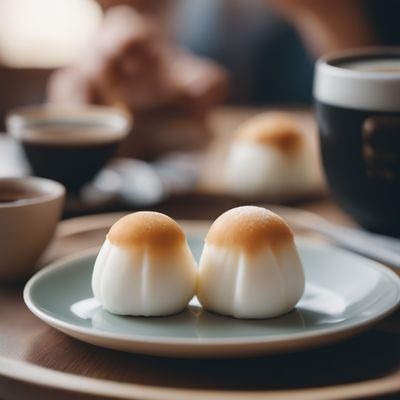
Coffee daifuku
Coffee daifuku is a Japanese sweet made with mochi and a coffee-flavored filling.
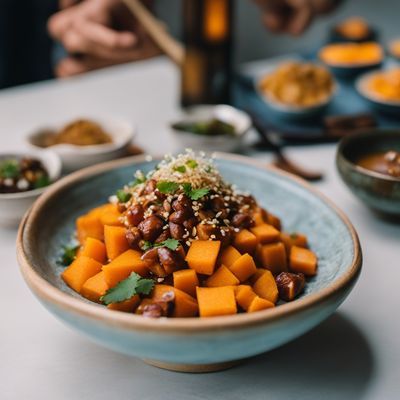
Kuri kinton
Kuri kinton is a traditional Japanese dish made with sweet potatoes and chestnuts. It is a popular dish during the fall and winter months and is...

Iwakunizushi
Rockfish sushi
Iwakunizushi is a type of sushi that originated in the Iwakuni region of Japan. It is made by wrapping sushi rice and toppings in a thin omelette.
More Korean cuisine dishes » Browse all
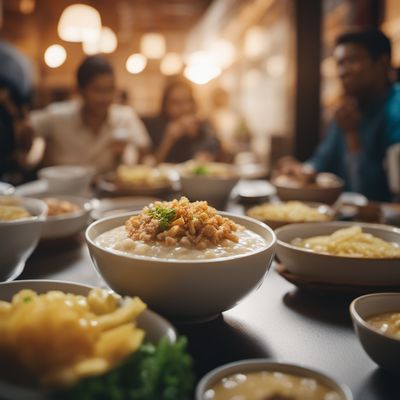
Dakjuk
Chicken Porridge
Dakjuk is a Korean chicken and rice porridge that is often served as a comfort food during cold weather or when someone is feeling under the...

Sannakji
Live Octopus
Sannakji is a traditional Korean dish that consists of live octopus that is cut into small pieces and served raw. It is a unique and adventurous...

Pajeon
Pajeon is a Korean pancake that is made with scallions and seafood. It is a popular dish in Korea and is often served as an appetizer or snack.










